You are here:
Health Information
Arthritis
Publication Date: October 2005
Joint Replacement Surgery and You
Information for Multicultural Communities
What Is Joint Replacement Surgery?
Joint replacement surgery is removing a damaged joint and putting in a new one. A joint is where two or more bones come together, like the knee, hip, and shoulder. The surgery is usually done by a doctor called an orthopaedic (or-tho-PEE-dik) surgeon. Sometimes, the surgeon will not remove the whole joint, but will only replace or fix the damaged parts
The doctor may suggest a joint replacement to improve how you live. Replacing a joint can help you relieve pain and move and feel better. Joints that can be replaced include the shoulders, fingers, ankles, and elbows. Hips and knees are replaced most often.
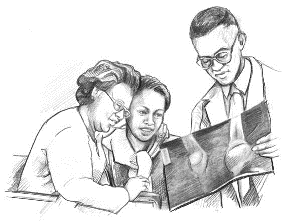
- What Can Happen to My Joints?
- What Is a New Joint Like?
- Do Many People Have Joints Replaced?
- Do I Need to Have My Joint Replaced?
- What Happens During Surgery?
- What Happens After Surgery?
- Will My Surgery Be Successful?
- What Research Is Being Done?
- Where Can I Learn More About Joint Replacement Surgery?
- Acknowledgments
What Can Happen to My Joints?
Joints can be damaged by arthritis and other diseases, injuries, or other causes. Arthritis or simply years of use may cause the joint to wear away. This can cause pain, stiffness, and swelling. Bones are alive, and need blood to be healthy, grow, and repair themselves. Diseases and damage inside a joint can limit blood flow, causing problems.
What Is a New Joint Like?
A new joint, called a prosthesis (praas-THEE-sis), can be made of plastic, metal, or both. It may be cemented into place or not cemented, so that your bone will grow into it. Both methods may be combined to keep the new joint in place.
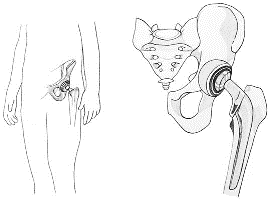
A cemented joint is used more often in older people who do not move around as much and in people with "weak" bones. The cement holds the new joint to the bone. An uncemented joint is often recommended for younger, more active people and those with good bone quality. It may take longer to heal, because it takes longer for bone to grow and attach to it.
New joints generally last at least 10 to 15 years. Therefore, younger patients may need to have the same damaged joint replaced more than once.
Do Many People Have Joints Replaced?
Joint replacement is becoming more common. About 435,000 Americans have a hip or knee replaced each year. Research has shown that even if you are older, joint replacement can help you move around and feel better.
Any surgery has risks. Risks of joint surgery will depend on your health before surgery, how severe your arthritis is, and the type of surgery done. More hospitals and doctors have been replacing joints for several decades, and this experience results in better patient outcomes. For answers to their questions, some people talk with their doctors, or someone who has had the surgery. A doctor specializing in joints will probably work with you before, during, and after surgery to make sure you heal quickly and recover successfully.
Do I Need to Have My Joint Replaced?
Only a doctor can tell if you need a joint replaced. He or she will look at your joint with an x-ray machine or other machines. The doctor may put a small, lighted tube (arthroscope) into your joint to look for damage. A small sample of your tissue could also be tested.
After looking at your joint, the doctor may say that you should consider exercise, walking aids like braces or canes, physical therapy, or medicines and supplements. Medicines for arthritis include drugs that reduce inflammation. Depending on the type of arthritis, the doctor may prescribe corticosteroids or other drugs. However, all drugs may cause side effects, including bone loss.
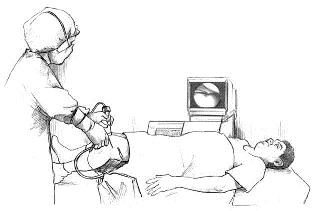
If these treatments do not work, the doctor may suggest an operation called an osteotomy (aas-tee-AAHT-oh-me), where the surgeon "aligns" the joint. Here, the surgeon cuts the bone or bones around the joint to improve alignment. This may be simpler than replacing a joint, but it may take longer to recover. However, it is not commonly done today.
Joint replacement is often the answer if you have constant pain and can't move the joint well; for example, if you have trouble with things like walking, climbing stairs, and taking a bath.
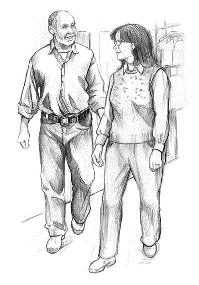
What Happens During Surgery?
First, the surgical team will give you medicine so you won't feel pain (anesthesia). The medicine may block the pain only in one part of the body (regional), or it may put your whole body to sleep (general). The team will then replace the damaged joint with a prosthesis.
Each surgery is different. How long it takes depends on how badly the joint is damaged and how the surgery is done. To replace a knee or a hip takes about 2 hours or less, unless there are complicating factors. After surgery, you will be moved to a recovery room for 1 to 2 hours until you are fully awake or the numbness goes away.
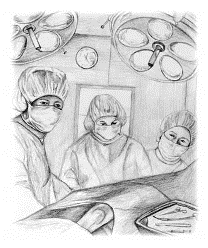
What Happens After Surgery?
With knee or hip surgery, you may be able to go home in 3-5 days. If you are elderly or have additional handicaps, you may then need to spend several weeks in an intermediate care facility before going home. How long you stay in the hospital will be determined by you and your team of doctors.
After hip or knee replacement, you will often stand and begin walking sometimes even the day of surgery. At first, you will walk with a walker or crutches. You may have some temporary pain in the new joint because your muscles are weak from not being used. Also, your body is healing. The pain can be helped with medicines and should end in a few weeks or months.
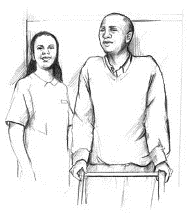
Physical therapy can begin the day after surgery to help strengthen the muscles around the new joint and help you regain motion in the joint. If you have your shoulder joint replaced, you can usually begin exercising the same day of your surgery! A physical therapist will help you with gentle, range-of-motion exercises. Before you leave the hospital (usually two or three days after surgery), your therapist will show you how to use a pulley device to help bend and extend your arm.
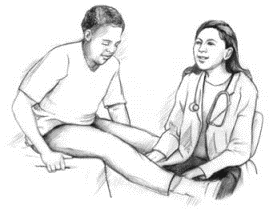
Will My Surgery Be Successful?
The success of your surgery depends a lot on what you do when you come home. Follow your doctor's advice about what you eat, what medicines to take, and how to exercise. Talk with your doctor about any pain or trouble moving.
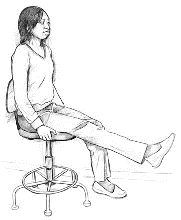
Joint replacement is usually a success in more than 90 percent of people who have it. When problems do occur, most are treatable. Possible problems include:
- Infection - Areas in the wound or around the new joint may get infected. It may happen while in the hospital or after you go home. It may even occur years later. Minor infections in the wound are usually treated with drugs. Deep infections may need a second operation to treat the infection or replace the joint.
- Blood Clots - If your blood moves too slowly, it may begin to form lumps of blood parts called clots. If pain and swelling develop in your legs after hip or knee surgery, blood clots may be the cause. The doctor may suggest drugs to make your blood thin, or special stockings, exercises, and/or boots to help your blood move faster. If swelling, redness, or pain occurs in your leg after you leave the hospital, contact your doctor right away.
- Loosening - The new joint may loosen, causing pain. If the loosening is bad, you may need another operation. New ways to attach the joint to the bone should help.
- Dislocation - Sometimes after hip or other joint replacement, the ball of the prosthesis can come out of its socket. In most cases, the hip can be corrected without surgery. A brace may be worn for a while if a dislocation occurs.
- Wear - Some wear can be found in all joint replacements. Too much wear may help cause loosening. The doctor may need to operate again if the prosthesis comes loose. Sometimes, the plastic can wear thin, and the doctor may just replace the plastic and not the whole joint.
- Nerve and Blood Vessel Injury - Nerves near the replaced joint may be damaged during surgery, but this does not happen often. Over time, the damage often improves and may disappear. Blood vessels may also be injured.
As you move your new joint and let your muscles grow strong again, pain will lessen, flexibility will increase, and movement will improve.
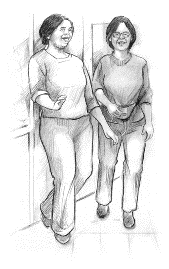
What Research Is Being Done?
Scientists are studying replacement joints to find out which are best to improve movement and flexibility. They are also looking at new joint materials and ways to improve surgery. Other researchers are working to find out what causes joint damage, how to prevent it, and how to treat it.
Some scientists are studying a condition called osteolysis, a condition where bone is lost around the implant in response to inflammation. This can cause the prosthesis to loosen, and may require a second surgery.
Other scientists are also trying to find out why some people who need surgery don't choose it. They want to know what things make a difference in choosing treatment, in recovery, and in well-being.
In 2003, experts at a national conference said that surgery to replace the knee was safe and worth the cost for those who need it. They also said it helps people to move better and have less pain. If you want to find out more about this conference, go to the Web site http://consensus.nih.gov/2003/2003TotalKneeReplacement117html.htm.
Where Can I Learn More About Joint Replacement Surgery?
-
National Institute of Arthritis and Musculoskeletal and Skin Diseases (NIAMS)
Information Clearinghouse
National Institutes of Health1 AMS Circle
Bethesda, MD 20892-3675
Phone: 301-495-4484
Toll Free: 877-22-NIAMS (226-4267)
TTY: 301–565–2966
Fax: 301-718-6366
Email: NIAMSinfo@mail.nih.gov
Website: http://www.niams.nih.govThe NIAMS, a part of the Department of Health and Human Services' National Institutes of Health, leads the Federal Government research effort in arthritis and other diseases that affect the muscles, bones, joints, and skin. The NIAMS supports research and research training throughout the United States, as well as on the NIH campus in Bethesda, Maryland. The NIAMS Office of Communications and Public Liaison provides health and research information for the public through the NIAMS Information Clearinghouse.
-
Office of Medical Applications of Research (OMAR)
National Institutes of HealthBuilding 31, Room 1B03,
31 Center Drive, MSC 2082
Bethesda, MD 20892-2082
Phone: 301–496–5641
Website: http://odp.od.nih.gov/omarOMAR is the focal point for assessing medical practice and state of the science on behalf of the medical community and the public. It works closely with NIH Institutes or Centers to assess, translate, and disseminate the results of biomedical research that can be used in the delivery of health services to the public. Several consensus statements on joint replacement surgery are available on its Web site.
-
MedlinePlus
Website: http://medlineplus.gov/
MedlinePlus is the National Library of Medicine's Web site for consumer health information.
-
American Academy of Orthopaedic Surgeons (AAOS)
P.O. Box 2058
Des Plaines, IL 60017
Toll Free: 800-824-BONE (2663)
Email: pemr@aaos.org
Website: http://www.aaos.orgThe academy provides education and practice management services for orthopaedic surgeons and allied health professionals. It also serves as an advocate for improved patient care and informs the public about the science of orthopaedics. The orthopaedist's scope of practice includes disorders of the body's bones, joints, ligaments, muscles, and tendons. For a single copy of an AAOS brochure, send a self-addressed stamped envelope to the address above or visit the AAOS Web site.
-
American College of Rheumatology (ACR)
1800 Century Place, Suite 250
Atlanta, GA 30345-4300
Phone: 404-633-3777
Fax: 404-633-1870
Website: http://www.rheumatology.orgThis association provides referrals to doctors and other health professionals who treat arthritis and other rheumatic diseases that may lead to joint replacement surgery. The association also provides educational materials and guidelines.
-
Arthritis Foundation
P.O. Box 7669
Atlanta, GA 30357-0669
Phone: 404-872-7100
Toll Free: 800-283-7800
Website: http://www.arthritis.orgThe Arthritis Foundation is the major voluntary organization devoted to supporting research into arthritis and other rheumatic diseases and providing education and other services to people with rheumatic diseases. This foundation publishes free pamphlets, and local chapters provide many services in the community, such as exercise classes, self-help courses, and support groups.
Acknowledgements
The NIAMS gratefully acknowledges the assistance of Graciela S. Alarcón, M.D., M.P.H., University of Alabama School of Medicine, Birmingham; Agustin Escalante, M.D., University of Texas Health Science Center, San Antonio; Kathleen Figaro, M.D., Vanderbilt University Medical Center, Nashville, TN; George Galante, M.D., Rush-Presbyterian-St. Luke's Medical Center, Chicago, IL; Julia McClanahan, Oak Ridge, TN; and James Panagis, M.D., NIAMS/NIH, Bethesda, MD.
Do You Have a Joint-Related Condition?
You may be able to help scientists learn more about these conditions.
For information about research projects near your home, call the
National Institute of Arthritis and Musculoskeletal and Skin Diseases (NIAMS)
Information Clearinghouse
National Institutes of Health
1 AMS Circle
Bethesda, MD 20892-3675
Phone: 301-495-4484
Toll Free: 877-22-NIAMS (226-4267)
TTY: 301–565–2966
Fax: 301-718-6366
Email: NIAMSinfo@mail.nih.gov
Website: http://www.niams.nih.gov
You could make a difference!
The mission of the National Institute of Arthritis and Musculoskeletal and Skin Diseases (NIAMS), a part of the Department of Health and Human Services' National Institutes of Health (NIH), is to support research into the causes, treatment, and prevention of arthritis and musculoskeletal and skin diseases; the training of basic and clinical scientists to carry out this research; and the dissemination of information on research progress in these diseases. The National Institute of Arthritis and Musculoskeletal and Skin Diseases Information Clearinghouse is a public service sponsored by the NIAMS that provides health information and information sources. Additional information can be found on the NIAMS Web site at www.niams.nih.gov/.



